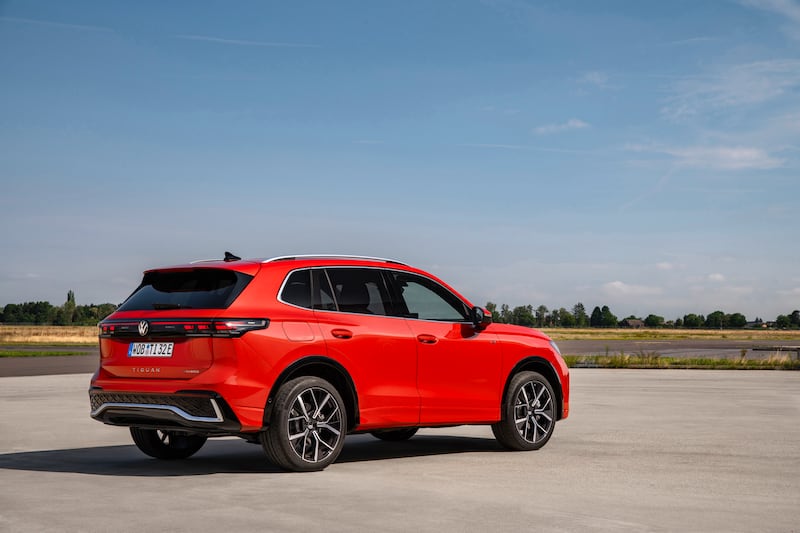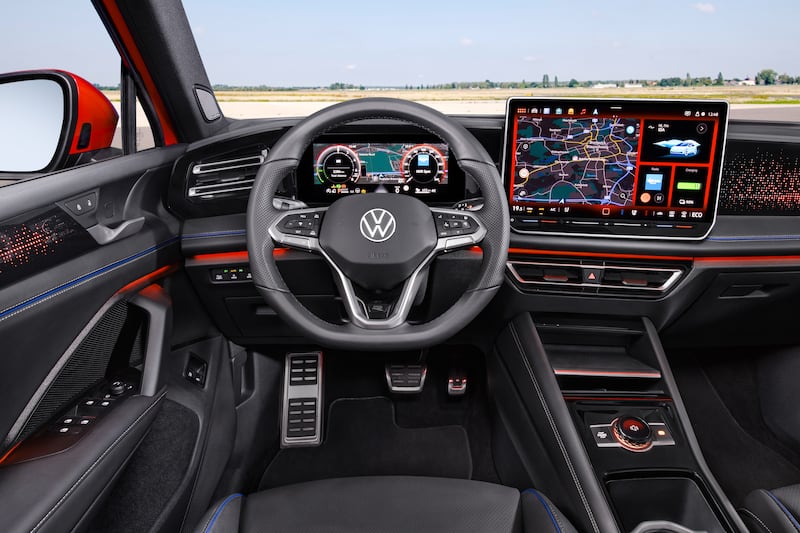Did you know that the Volkswagen Tiguan has managed to find more than 7.6-million buyers worldwide? That’s more than the Skoda Octavia, which has been on sale for quite a lot longer in its various generations. It’s more than the Volvo 240 series, which stayed on sale for 20 years. The Tiguan — which even though it has slipped back a bit in the Irish sales charts still outsells the once-unstoppable Golf — is about to be reinvented, and while it won’t look wildly different up top, underneath there’s going to be a major change.
That major change is the addition of a plug-in hybrid model which will have a battery big enough — 25.7kWh — for a range of up to 100km on a full charge. VW, and many other car makers, are hoping both that this new generation of long-range plug-in hybrid will be legislatively acceptable to governments, and possibly convince buyers to actually plug them in and charge them up regularly.
That hybrid system is supported by an uprated ‘MQB Evo’ platform, which has been much modified and theoretically improved. It means that the hybrid’s battery can be fast-charged from a 50kW DC public charging point, which should make the system a little more flexible for longer journeys.

On the outside, while the overall silhouette is recognisably still a Tiguan, there are detail changes, such as styling around the nose that links the car to VW’s electric ID models. There are also new 20-inch alloy wheels option, but the new styling is not just about aesthetics — the Tiguan’s aerodynamic drag figure has been trimmed from 0.33Cd to 0.28Cd.
READ MORE
Inside, the Tiguan will share much with the new ID.7 all-electric saloon, including a large 15-inch tablet-style central infotainment screen, and a gear selectors mounted on the steering column — all versions will come with a DSG automatic gearbox as there will no longer be a manual-shift Tiguan.
That big screen, and the driver’s digital instrument panel, use new ultra-crisp OLED technology, while there’s a small rotary controller on the centre console that allows you to pick different driving modes. That switch even gets its own screen. There’s a heads-up display too, and seats with a pneumatic massaging system, as well as new ultra-bright and auto-dipping IQ.LIGHT HD matrix headlights. These use a total of 38,400 multipixel LEDs (19,200 multipixel LEDs per headlight) and are effectively like having HD cinema projectors strapped to the front of the car.
Aside from the plug-in hybrid version, there will be mild-hybrid petrol and diesel versions of the new Tiguan, but it will be the last new SUV model from Volkswagen. In the coming years, the all-electric ID lineup and the combustion-powered side of the showroom will be slowly but surely combined into one — most likely starting with the new all-electric ID.Golf in 2028.
To try and make the new Tiguan as fun to drive as possible, it will get the Vehicle Dynamics Manager system from the Golf GTI, and will be optionally available with both electronically controlled suspension dampers, and new DCC Pro with two-valve shock absorbers.
The Dynamics Manager system controls the functions of the electronic differential locks (XDS — which helps to find grip when you’re putting power down in a corner) and the controlled shock absorbers in the DCC Pro system. Wheel-specific braking interventions and selective changes in the shock absorber hardness lead, says VW; “to greater comfort and enhanced performance during dynamic cornering.”

Perhaps most importantly, VW says that it has improved the Tiguan’s luggage capacity, giving it a massive 652-litre boot, although there’s no confirmation yet that the plug-in hybrid version gets a boot that big.
Kai Grünitz, VW’s head of technical development, said: “The latest evolutionary stage of the Modular Transverse Matrix (MQB evo) forms the highly innovative technical basis of the third generation of the Tiguan.
“Thanks to the large economies of scale of the MQB evo, Volkswagen is once again democratising numerous high-tech developments such as the DCC Pro or the new hybrid drives with an electric range of around 100 km and making them available to hundreds of thousands of drivers.”
The first examples of the new Tiguan should start to arrive in Ireland in early 2024. Will this new version push the Tiguan past the 10-million sales mark?













